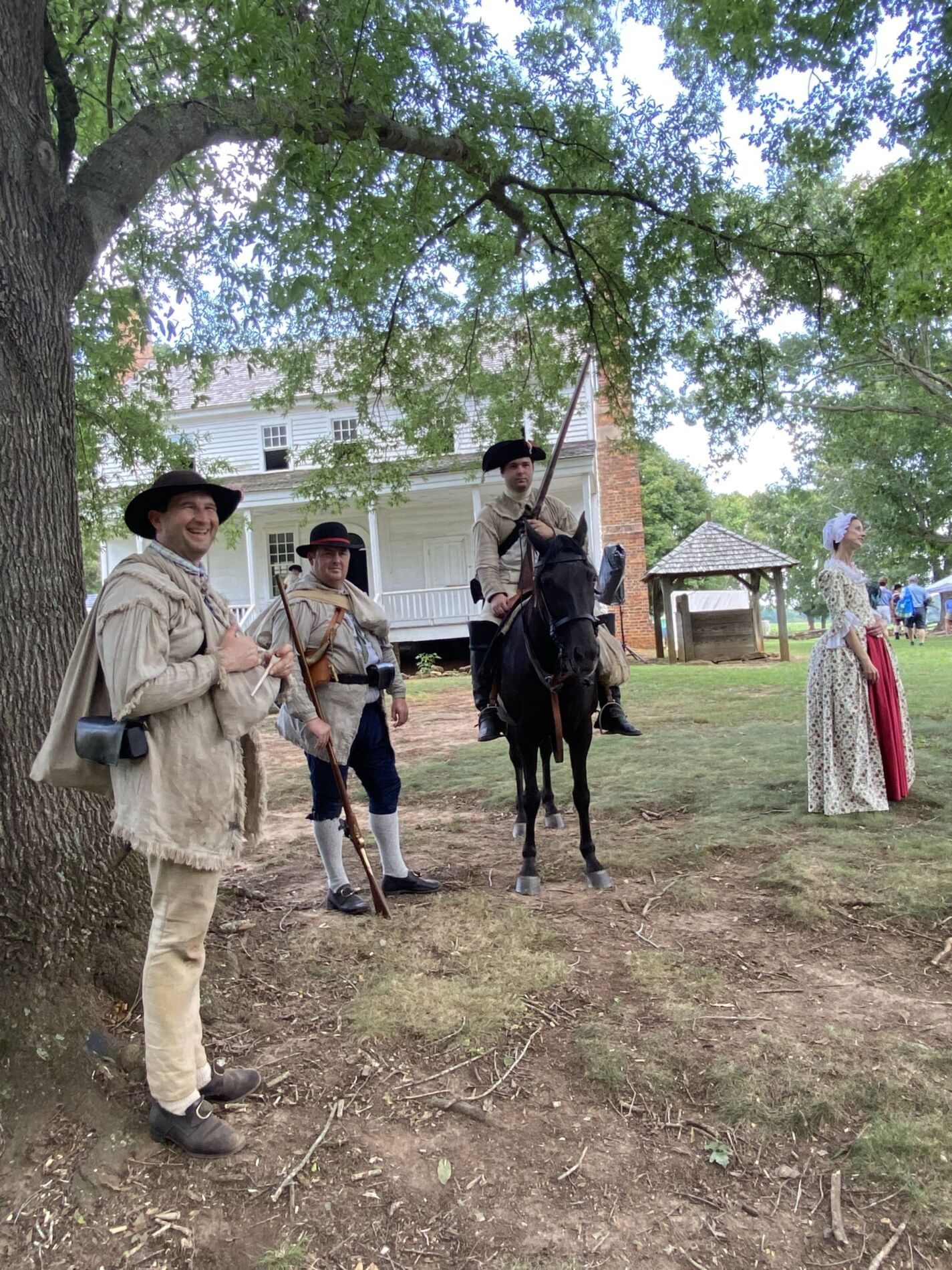Recently, on a particularly hot day that made me wonder how in the world Revolutionary War soldiers weathered the heat in their woolen garb, much less while evading whizzing musket balls, I visited the House in the Horseshoe State Historic Site for a robust reenactment of a fight between Patriot militia and Loyalist Tory forces in July 1781. Named for the 1,500-acre property on a horseshoe-shaped bend of the Deep River, the house was built by Philip Alston in 1773 and is a great representation of the Georgian architecture of the time.
Background
One of the main things I learned at this reenactment is that so much of the Revolutionary War in North Carolina did not involve British regular soldiers in their bright red uniforms, nor did it involve American Continental forces in their dark blue uniforms like you see in paintings from northern Revolutionary battles. Instead, the war in our state involved primarily small bands of Patriot and Tory combatants who attacked each other and raided their respective communities using guerilla tactics. Sometimes, they operated under the guidance and instruction of the British or Continental generals, but typically they had their own leadership commanding their daily marauding attacks.

The battle
According to the historic site’s documentation, David Fanning, a native Virginian who had settled in South Carolina, became an officer in the Loyalist militia in 1775. Known for his ruthless fighting skills, he had risen to the rank of colonel by 1781 and was active in central North Carolina, raiding homes of those opposing the Crown and capturing Patriot militia leaders and soldiers.
Leading up to the battle, Fanning had become particularly active as British General Cornwallis was becoming active in western South Carolina and moving into North Carolina west of Charlottetown. Fanning had captured more than 50 officials and county militiamen at the Chatham County Courthouse. When he would capture a large group of Patriots like that, he would turn them over to the British — this time in Wilmington. When he came back to the Deep River area, he learned of more militia active in the area, led by local militia Colonel Philip Alston.
On the morning of July 29, 1781, Fanning crossed the Deep River with around 40 men and quickly surrounded the house. They fired their muskets on Alston’s men who were behind a fence. Alston quickly led his men back into the back of the house, and the fight proceeded until Fanning’s men brought a wagon filled with straw out and lit it, intending to set fire to the house. Temperance Alston, Colonel Alston’s wife, had been active in the house protecting her children during the skirmish — standing them on a table in the large fireplace to protect them from musket balls. She ran out of the house and offered to surrender if the battle would stop. Fanning accepted the surrender after the three-hour confrontation, with the provision that Colonel Alston would accept parole terms and not fight any more — something he apparently held to for the rest of the fighting.
Because of the valiant actions of his wife, Philip Alston and his house survived the attack, and we have it as an excellent example of the kind of backwoods raiding and marauding that went on in our state during the war, pitting neighbor against neighbor and family against family in surprisingly hateful attacks on each other.
The reenactment
The reenactment had a realistic feel to it, with back-and-forth musket fire between the Tory and Patriot forces and even one Tory leader firing a musket repeatedly from horseback. The Tory effort to light the house on fire was represented with a wagon set on fire and man with a torch, highlighting a tactic that was repeated far too often all throughout the colony.
I was glad to attend the event and walk around talking to vendors, members of the Sons of the American Revolution, a gentleman explaining how muskets fire, and several others. Apparently, the event will not take place next year in 2026 because the site will be undergoing renovations.









